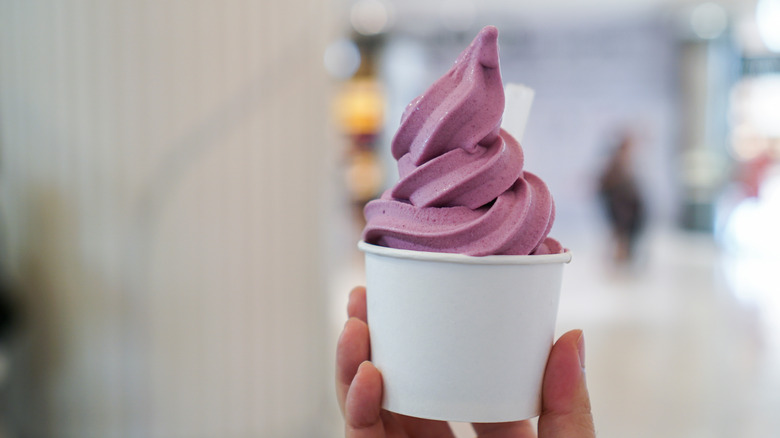Why Some Restaurants Have To Call Their Ice Cream 'Soft Serve'
Some restaurants have to promote their frozen desserts as soft serve because they aren't actually ice cream. For example, Dairy Queen admits as such on their website: "Technically, our soft serve does not qualify to be called ice cream. To be categorized as ice cream, the minimum butterfat content must be ten percent, and our soft serve has only five percent butterfat content." The relevant FDA regulations can be found here. So, if what appears to be ice cream isn't advertised as ice cream, but purely as a soft serve, that's the probable reason.
However, Dairy Queen technically could advertise their blizzards as "reduced fat ice cream," as both Dairy Queen admits and the rules described by the International Dairy Foods Association indicate. When reduced fat appears in the product's name, it means that the product contains at least 25% less fat than regulations stipulate. Dairy Queen still calls their stuff soft serve though. Perhaps it's less of a headache.
Is soft serve different from ice cream?
The reason restaurants like Dairy Queen and McDonald's may refer to their products as soft serve (and not soft serve ice cream) is that soft serve is, in FDA terms, meaningless. As Consumer Reports writes when differentiating ice cream, gelato, and soft serve, the stuff Dairy Queen sells is never packaged and frozen, so there are no regulations that demarcate what soft serve is.
However, the important detail is that most of us would consider soft serve to be ice cream, regardless of the FDA. For example, the McDonald's Vanilla Cone looks how we imagine ice cream to look. The technicality that it isn't ice cream due to dairy fat levels doesn't matter.
After all, as Forbes reports, the McCulloughs — the Dairy Queen founders who also claim to have invented soft serve — perfected their recipe by removing the higher levels of butterfat. But the fact that soft serve isn't technically ice cream, but an invention made from rethinking recipes for ice cream matters little when, as sales have shown, people flock to the product's flavor anyway.

